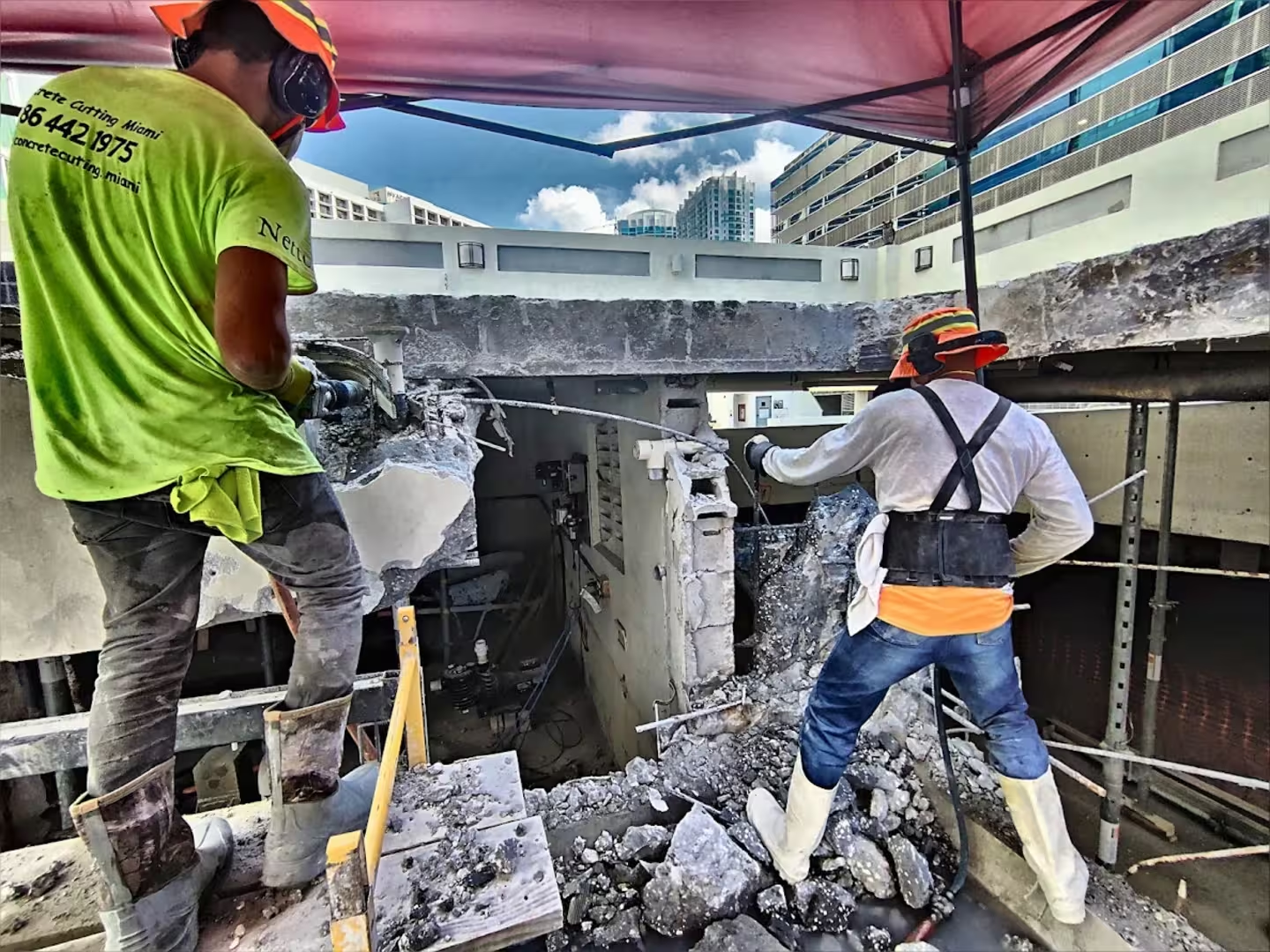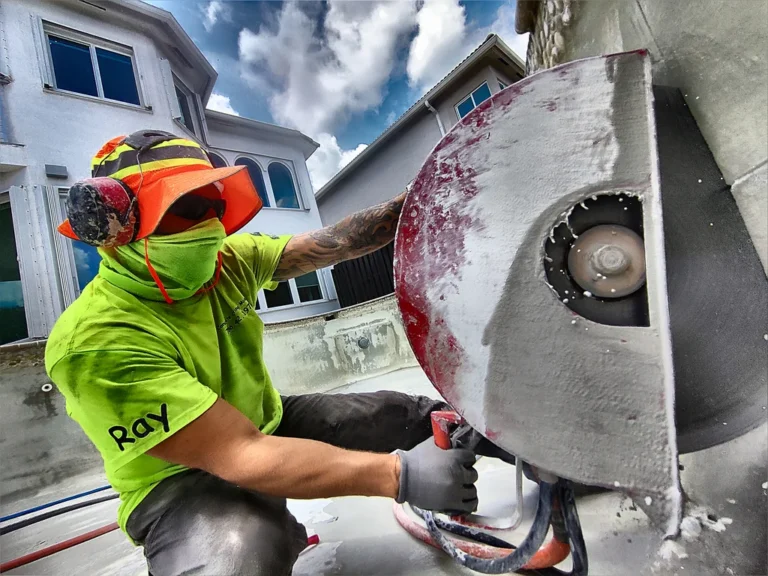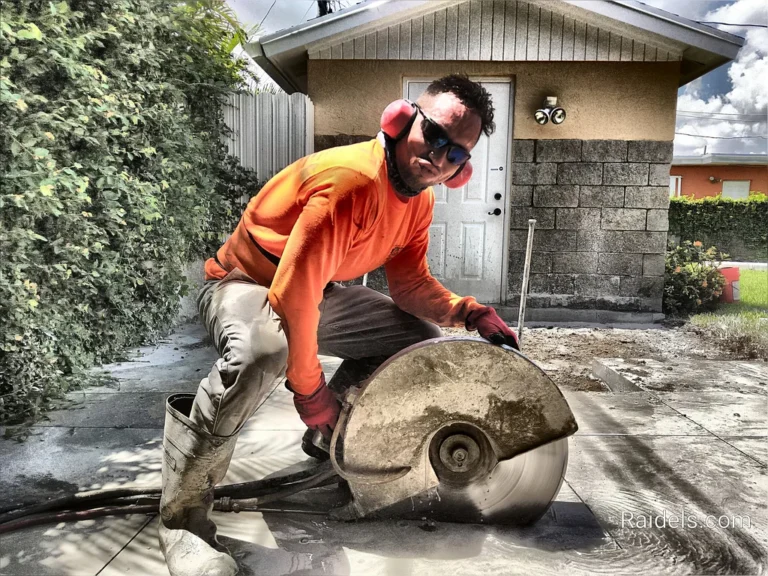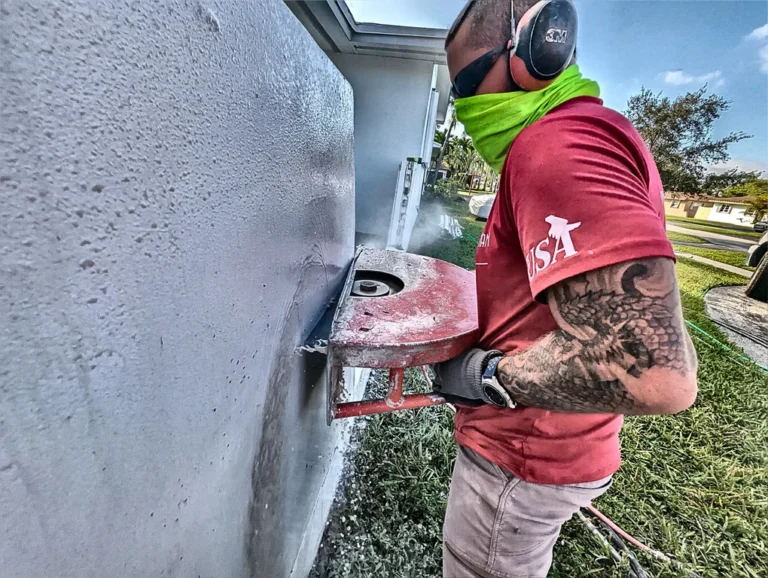Navigating the world of concrete modification requires precision, expertise, and the right tools for the job. Whether undertaking a major renovation, addressing structural repairs, or simply making way for new plumbing, selecting the appropriate concrete cutting method is paramount, especially in the unique environment of Miami. From dealing with reinforced structures to managing environmental factors like heat and humidity, understanding the different techniques ensures efficiency, safety, and optimal results. This guide delves into the primary methods used in the industry, helping you understand which approach best suits your specific Miami project.
Understanding the Basics: Why Cut Concrete?
Before exploring the methods, it’s essential to grasp why precise cutting is often preferred over brute-force demolition. Concrete cutting offers controlled removal, minimizes damage to surrounding structures, reduces noise and dust compared to traditional demolition, and allows for creating clean openings for doors, windows, or utility lines. It’s a foundational technique in modern construction and renovation, vital for everything from concrete slab sawing to intricate core drilling.
Key Concrete Cutting Methods Explained
The method chosen often depends on the project’s scale, the thickness and type of concrete, accessibility, and whether reinforcement like rebar is present.
1. Slab Sawing (Flat Sawing)
Perhaps the most common method, slab sawing utilizes powerful walk-behind machines with diamond blades. It’s the go-to technique for cutting horizontal flat surfaces.
- Applications: Creating openings in floors, patios, driveways, and bridge decks; cutting trenches for plumbing or electrical conduits; removing damaged pavement sections; creating control joints to prevent cracking.
- How it Works: A large diamond blade mounted on a walk-behind machine cuts through concrete and asphalt. Depths can vary significantly, often reaching up to 24 inches or more depending on the saw. Wet cutting is standard to control dust and cool the blade.
- Miami Considerations: Ideal for large-scale projects like warehouse floor modifications or saw cut concrete driveway work common in South Florida. Efficiency is key for larger surface areas. For reliable slab sawing services, professional equipment is essential.
2. Wall Sawing
When precision vertical or sloped cuts are needed, wall sawing is the preferred method. These saws are track-mounted, ensuring straight, clean cuts even on challenging surfaces.
- Applications: Creating openings for windows, doors, and HVAC systems in concrete walls; making cuts on steep inclines or vertical surfaces; preparing sections for demolition.
- How it Works: A circular diamond blade is mounted on a track system attached to the wall. This allows for precise control and deep cuts, often necessary when cutting concrete wall for window openings. Remote operation enhances safety.
- Miami Considerations: Essential for building modifications and renovations in Miami’s dense urban landscape. Effective for creating openings in poured concrete or block walls, a common construction style in the region. Understanding concrete wall sawing cost factors is important for budgeting.
3. Hand Sawing (Including Hydraulic & Electric)
For smaller jobs, tight spaces, or areas inaccessible to larger saws, hand-held saws offer versatility. These include circular saws, cut-off saws, and powerful hydraulic or electric chainsaws.
- Applications: Making smaller openings in walls or floors; cutting pipes; precision trimming; working in confined spaces where larger equipment won’t fit. Hydraulic saws are particularly useful for indoor work where fumes are a concern.
- How it Works: Operators use powerful hand-held saws equipped with diamond blades or chains. Hydraulic concrete hand saw options provide significant power without the exhaust fumes of gas models. Concrete hand saws require skill for precise, safe operation.
- Miami Considerations: Crucial for interior renovations, plumbing adjustments, and electrical work within existing Miami homes and businesses. Hydraulic chain sawing offers fume-free power, ideal for indoor pool removal prep or basement modifications.
4. Core Drilling
Core drilling creates precisely sized circular holes, essential for various utility installations and structural analysis.
- Applications: Creating holes for plumbing pipes, electrical conduits, HVAC ducts, and telecommunication lines; obtaining concrete samples for testing; installing anchor bolts or dowel bars.
- How it Works: A diamond-tipped cylindrical core bit is rotated to drill perfect holes ranging from less than an inch to several feet in diameter. Water is typically used to cool the bit and flush debris.
- Miami Considerations: Widely used in commercial and residential construction throughout Miami for utility pass-throughs. Essential for projects involving reinforced concrete, foundation work, and installing fixtures like railings or bollards. Finding reliable core drilling services ensures accuracy.
5. Wire Sawing
For cutting massive concrete structures or in situations where other methods are impractical, wire sawing offers unique capabilities.
- Applications: Cutting through very thick concrete sections (piers, columns, bridge sections); underwater cutting; precise cuts in confined spaces or on irregular shapes where blade saws can’t operate effectively.
- How it Works: A multi-strand cable impregnated with diamond segments is looped around the concrete element and run through a system of pulleys. As the wire is pulled and rotated, it cuts through the concrete.
- Miami Considerations: Often employed in large-scale infrastructure projects, marine construction (like cutting piles for docks in the Florida Keys), or complex industrial demolition scenarios sometimes encountered in South Florida. It’s a specialized technique for the most challenging cuts.
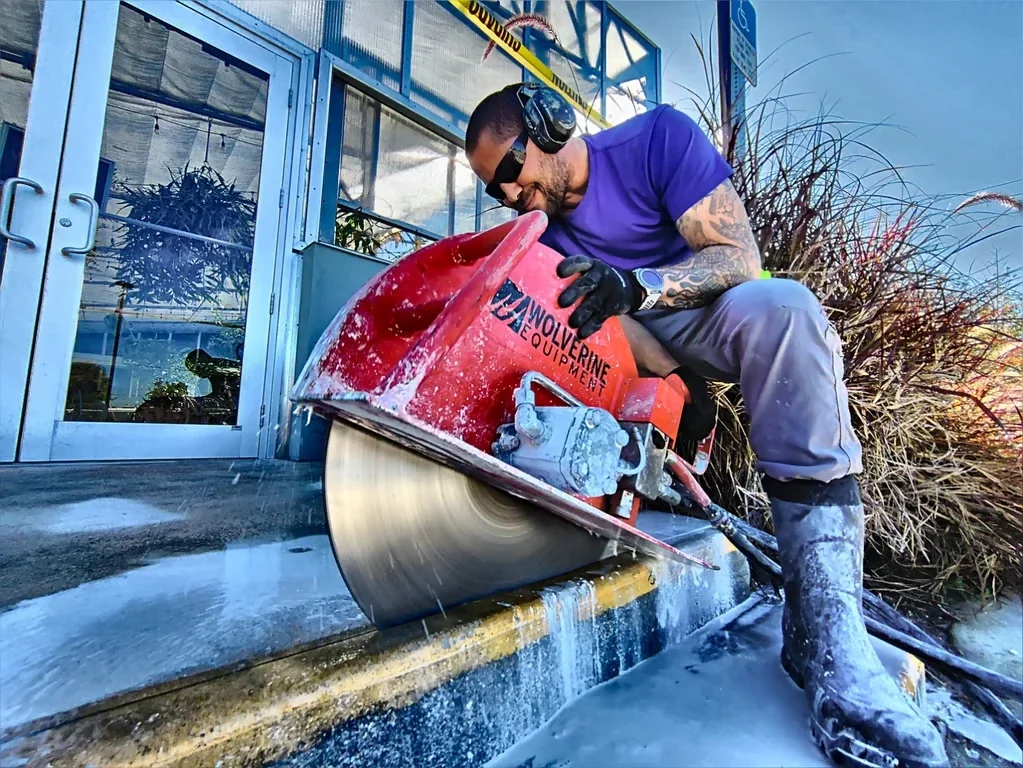
Critical Considerations for Concrete Cutting Projects
Beyond choosing the right method, several factors influence project success and safety.
Dealing with Reinforcement (Rebar)
Many concrete structures, especially in hurricane-prone areas like Miami, contain steel reinforcement (rebar). Cutting through this requires specific knowledge and equipment. While standard diamond blades can cut through rebar, it slows the process and increases blade wear. Operators must know can a concrete saw cut through rebar? The answer is yes, but specialized blades or techniques might be needed for heavily reinforced sections. Proper assessment before cutting is crucial to avoid unexpected delays or equipment damage.
Safety Protocols: Dust and Debris Management
Concrete cutting safety is non-negotiable. A major hazard is the generation of silica dust, which can cause serious respiratory illnesses if inhaled. Wet cutting is the primary method for dust suppression. Water cools the blade and turns the dust into a slurry, which can then be managed and disposed of properly. Additional measures include using saws with integrated vacuum systems and ensuring operators wear appropriate personal protective equipment (PPE), including respirators, eye protection, and hearing protection. Minimizing dust and debris is vital, especially during residential projects.
Wet vs. Dry Cutting
While wet cutting is standard for dust control and blade longevity, dry cutting is sometimes necessary, particularly for smaller jobs or where water slurry management is difficult. Dry cutting requires specialized blades designed for higher temperatures and mandates stringent dust control measures like high-efficiency vacuums and superior respiratory protection. Understanding is it better to cut concrete wet or dry involves weighing safety, efficiency, and job site constraints.
Structural Integrity
Cutting into concrete, especially load-bearing walls or slabs, can impact a structure’s integrity if not done correctly. Professional assessment is vital before making significant cuts. This may involve consulting structural engineers, using ground-penetrating radar (GPR) to locate rebar and conduits, and employing techniques that maintain stability during and after the cutting process. Concrete cutting for foundation repair requires particular expertise.
Concrete Cutting vs. Breaking/Demolition
It’s important to differentiate precision cutting from general concrete breaking or demolition. While demolition involves removing large sections, often with less precision using tools like jackhammers or excavators, cutting is about creating controlled openings or separations.
- Chipping: Uses tools like chipping hammers to remove smaller amounts of concrete, often for surface preparation or creating channels. Chipping concrete is less precise than sawing.
- Breaking: Uses impact tools like jackhammers or hydraulic breakers. Effective for wholesale removal but generates significant vibration, noise, and dust. Consider breaking concrete with hand tools for smaller, non-structural tasks.
- Cutting: Offers the most control, minimizing collateral damage and allowing for clean, precise edges. It’s often used in conjunction with demolition to isolate sections before removal. Exploring concrete cutting vs breaking helps clarify which approach is suitable.
The choice between these methods often depends on whether preservation of the surrounding structure is critical and the level of precision required. For many renovation and repair projects in Miami, concrete cutting and demolition techniques must be carefully selected.
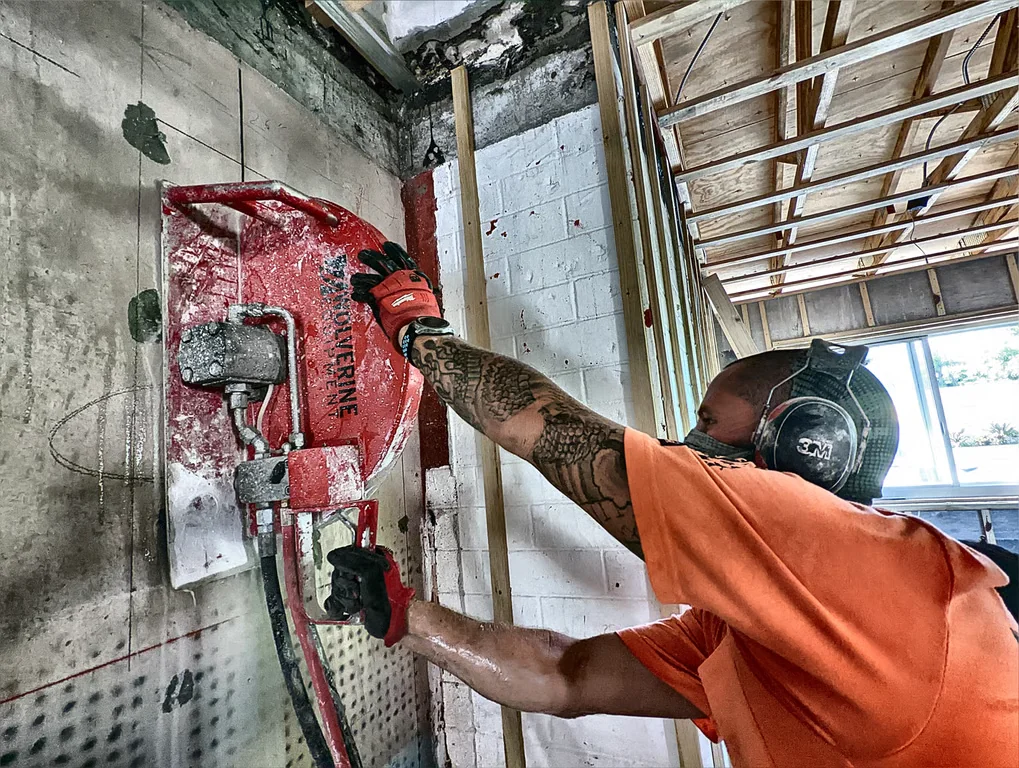
When to Call the Professionals
While some smaller DIY concrete projects involving concrete might seem feasible, concrete cutting generally requires specialized equipment, knowledge, and a strong focus on safety.
Consider professional services when:
- Dealing with structural elements (load-bearing walls, beams, thick slabs).
- Cutting heavily reinforced concrete.
- Deep cuts are required.
- Large areas need to be cut (requiring efficient slab saws).
- Working in confined spaces or areas requiring specialized equipment (hydraulic saws, wire saws).
- Strict dust control is mandatory (indoor work, sensitive environments).
- Precision and clean edges are critical for the finished work.
- You lack the necessary safety equipment or training.
Professional concrete cutting services bring expertise in selecting the right method, operating advanced machinery safely, managing dust and slurry effectively, and ensuring the structural integrity of your property is maintained throughout the process. They understand the unique challenges posed by Miami’s environment and building codes. Investing in professional help often saves time, prevents costly mistakes, and guarantees a safer, higher-quality outcome.
